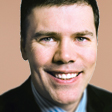Why Your Results Stink
Volatile funds push all the wrong emotional buttons. When they go way up, we get greedy and buy.

The stock market's powerful rally since early March has been a blessing for patient investors. Many of the funds that suffered the most during the bear market have experienced the biggest rebounds. But a lot of investors didn't stick around for the comeback. And who could blame them? It's hard to hang tough when your fund has sunk 50% or more. Yet fleeing short-term laggards or jumping to the hot fund du jour often undermines investors' returns.
We at Morningstar have a way of capturing the true costs of fund hopping. In addition to a fund's total return, we calculate what an average investor in the fund really earned. Investor returns adjust the officially reported returns based on cash flows into and out of funds. The gap between the figures essentially tells you how well or how poorly investors did at timing.
Missing the rally. When I ran the data at the end of 2008, the gap between reported returns and investor returns had shrunk because customers were fleeing funds in droves as the financial crisis deepened. Initially, that was a good thing because stocks were falling like a rock. But when, at a moment of deep despair, stocks started to rally on March 10, a huge amount of money was sitting on the sidelines.
From just $107.88 $24.99 for Kiplinger Personal Finance
Become a smarter, better informed investor. Subscribe from just $107.88 $24.99, plus get up to 4 Special Issues

Sign up for Kiplinger’s Free Newsletters
Profit and prosper with the best of expert advice on investing, taxes, retirement, personal finance and more - straight to your e-mail.
Profit and prosper with the best of expert advice - straight to your e-mail.
So I haven't been surprised to see the recent expansion in the gap between official and investor returns -- especially for mid-cap funds, which have posted the best returns this year among diversified domestic-stock funds. For example, the average reported annualized return for mid-cap growth funds for the ten-year period through July was 3.1%. But the average investor in these funds earned only 0.2% annualized. In mid-cap value, the gulf is even wider: average reported returns of 6.4% annualized, compared with an annualized 2.3% earned by the typical investor.
Why do investors make such a mess of things? In short, because of volatility, emotion and a focus on short-term results (see Be a Better Investor). Volatile funds push all the wrong emotional buttons. When they go way up, we get greedy and buy. When they go way down, we despair and bail out. And we read too much into recent performance.
CGM Focus and T. Rowe Price Equity Income (both members of the Kiplinger 25) illustrate how volatility affects investor behavior. Both are run by excellent managers (Ken Heebner and Brian Rogers, respectively) who have beaten their peers over the long term. Focus's ten-year annualized return of 17.8% thumps Equity Income's 2.1% yearly return over the same period -- as it should, because Heebner takes much bigger risks than Rogers. Heebner makes huge sector bets, holds only about 20 stocks and even sells short stocks that he thinks are primed for a fall. Rogers aims for a steady ride by focusing on reasonably priced, dividend-paying stocks.
But consider what investors actually earned. Rogers's clients have kept nearly all of the fund's meager gains, earning an average of 1.3% annualized over the past ten years. Heebner's have somehow turned their fund's terrific reported results into an annualized loss of 16.8%. They managed that feat by piling into Focus after its extraordinary 80% gain in 2007, only to get pummeled when Focus plunged 48% in 2008.
To improve your chances of enjoying most of the returns your funds generate, it's important to set realistic expectations. Be sure to understand a fund's strategy and study past calendar-year returns to see how widely its results swing. Then look at the trades you've made over the years to see if you've overreacted to short-term events. If you did, then stay away from funds such as CGM Focus. Look instead for quiet funds, such as Rogers's, or even balanced funds. They may be boring, but they won't encourage you to trade away many, if not all, of your gains.
Columnist Russel Kinnel is director of mutual fund research for Morningstar and editor of its monthly FundInvestor newsletter.
Profit and prosper with the best of Kiplinger's advice on investing, taxes, retirement, personal finance and much more. Delivered daily. Enter your email in the box and click Sign Me Up.

-
 Forget FIRE: Why ‘FILE’ Is the Smarter Move for Child-Free DINKs
Forget FIRE: Why ‘FILE’ Is the Smarter Move for Child-Free DINKsHow shifting from "Retiring Early" to "Living Early" allows child-free adults to enjoy their wealth while they’re still young enough to use it.
-
 7 Tax Blunders to Avoid in Your First Year of Retirement
7 Tax Blunders to Avoid in Your First Year of RetirementA business-as-usual approach to taxes in the first year of retirement can lead to silly trip-ups that erode your nest egg. Here are seven common goofs to avoid.
-
 How to Plan for Social Security in 2026's Changing Landscape
How to Plan for Social Security in 2026's Changing LandscapeNot understanding how the upcoming changes in 2026 might affect you could put your financial security in retirement at risk. This is what you need to know.
-
 Best Banks for High-Net-Worth Clients
Best Banks for High-Net-Worth Clientswealth management These banks welcome customers who keep high balances in deposit and investment accounts, showering them with fee breaks and access to financial-planning services.
-
 Stock Market Holidays in 2026: NYSE, NASDAQ and Wall Street Holidays
Stock Market Holidays in 2026: NYSE, NASDAQ and Wall Street HolidaysMarkets When are the stock market holidays? Here, we look at which days the NYSE, Nasdaq and bond markets are off in 2026.
-
 Stock Market Trading Hours: What Time Is the Stock Market Open Today?
Stock Market Trading Hours: What Time Is the Stock Market Open Today?Markets When does the market open? While the stock market has regular hours, trading doesn't necessarily stop when the major exchanges close.
-
 Bogleheads Stay the Course
Bogleheads Stay the CourseBears and market volatility don’t scare these die-hard Vanguard investors.
-
 The Current I-Bond Rate Is Mildly Attractive. Here's Why.
The Current I-Bond Rate Is Mildly Attractive. Here's Why.Investing for Income The current I-bond rate is active until April 2026 and presents an attractive value, if not as attractive as in the recent past.
-
 What Are I-Bonds? Inflation Made Them Popular. What Now?
What Are I-Bonds? Inflation Made Them Popular. What Now?savings bonds Inflation has made Series I savings bonds, known as I-bonds, enormously popular with risk-averse investors. How do they work?
-
 This New Sustainable ETF’s Pitch? Give Back Profits.
This New Sustainable ETF’s Pitch? Give Back Profits.investing Newday’s ETF partners with UNICEF and other groups.
-
 As the Market Falls, New Retirees Need a Plan
As the Market Falls, New Retirees Need a Planretirement If you’re in the early stages of your retirement, you’re likely in a rough spot watching your portfolio shrink. We have some strategies to make the best of things.